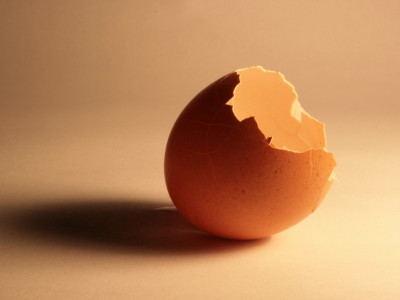How should mankind face the environmental pollution caused by plastic waste?

With a cheap, lightweight and durable plastic material, our modern lifestyles are rich. However, at the same time, environmental pollution problems caused by plastic waste that is discharged in large quantities every year are also being scrutinized, and we are working on a solution by refraining from using plastic products and recycling. Kurzgesagt, who explains various daily questions with a scientific approach, on YouTube about what the problem of this plastic waste is and how to deal with it.
Plastic Pollution: How Humans are Turning the World into Plastic - YouTube
King Midas, who appears in Greek mythology, will receive "the ability to turn all things touching into gold" from God. If grapes, clothes and rocks all touch it, it will become a beautiful gold, and King Midas gains enormous wealth.

But also with the joy of that, food and drinks all changed to gold, and my daughter who hugged became a golden statue, so King Midas said that the ability given by God leads to destruction I notice. King Midas who can not touch anyone is hit by loneliness.

Human beings have acquired a magical technique to make plastics from petroleum, but as with the hands of King Midas, this technology can lead themselves to ruin themselves.
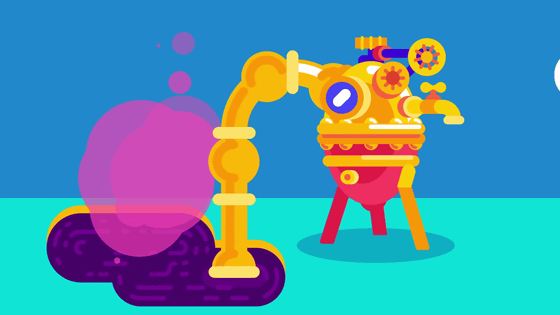
Plastics are called polymers ( polymers ), main materials are substances formed by connecting several molecules like chains.
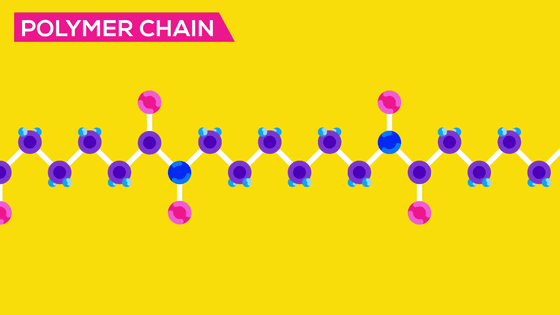
Polymers are also found in the natural world, such as cell membranes, silk threads, hair, insect shells and DNA.
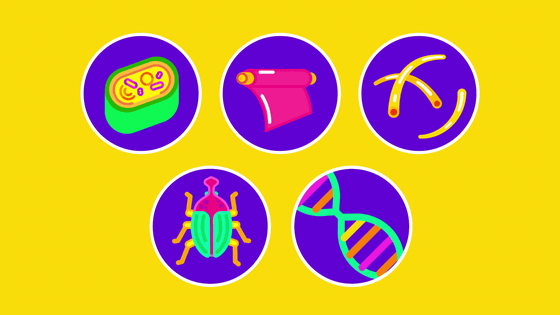
About 100 years ago, humankind has been artificially producing polymers from crude oil.
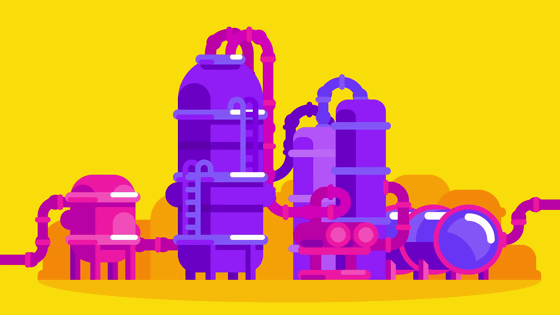
One example is polyethylene terephthalate (PET). PET, as its name suggests, is formed by a series of ethylene glycol and terephthalic acid, the production method was established in 1941, began circulating in the market since 1948.
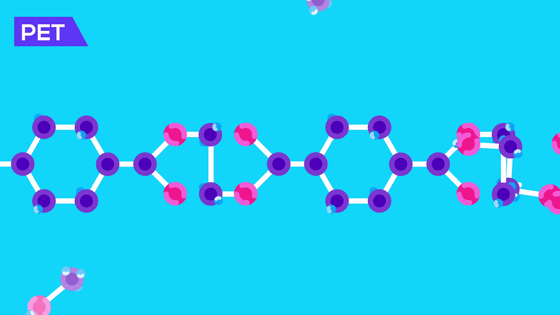
PET that is easy to process and inexpensive is used for clothing fibers such as plastic bottles and fleeces in beverage containers.
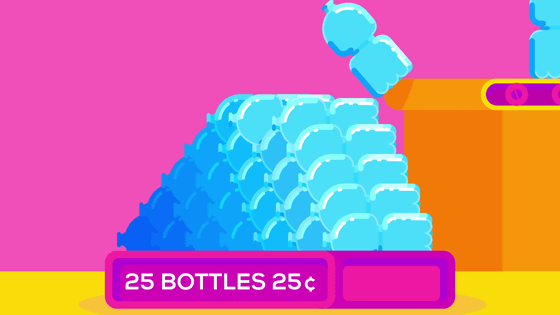
Other plastics that can be made from petroleum include phenolic resin , polyvinyl chloride (PVC), ...
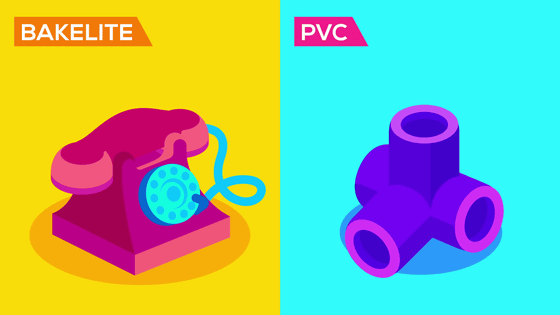
There are various kinds such as acrylic resin and nylon .

Plastic is an indispensable material for our lives anymore, plastic is used for most things around us.

However, as our lives depend on plastics, it is also true that the amount of plastic discharged as garbage is increasing.
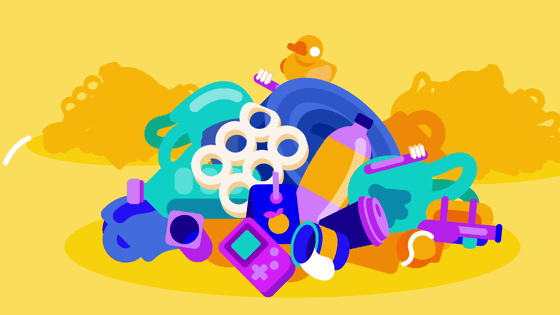
40% of plastics are used for packaging, in the United States one third of garbage discharged in one year is said to be plastic for packaging. About 100 years since invention was invented, mankind has produced about 8.3 billion tons of plastic, and in 2016 it produces 335 million tons of plastic.
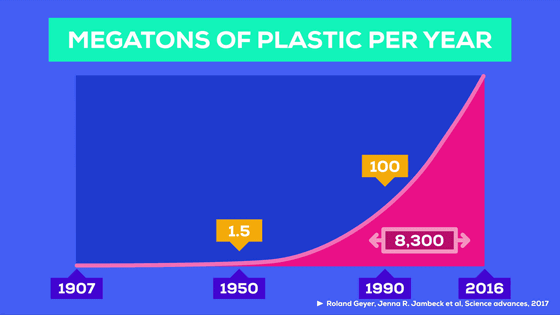
Meanwhile, we have discharged 6.3 billion tons of plastic waste in 100 years, and when we stack them in one place it becomes a cube of 1.9 km per side, and its volume is about 6.9 cubic km. However, plastic is highly durable and it is said to be decomposed naturally from 500 to 1000 years, so it can hardly be expected that this amount of garbage will be decomposed and reduced even if it is landfilled .
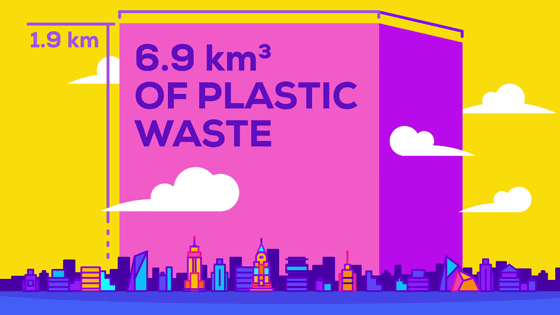
9% of the discharged plastic waste is recycled and 12% is burned in an incinerator. However, the remaining 79% is destined to be discarded as it is.

Among them, 8 million tons are annually disposed of in the ocean. If the ocean dumping continues like this, the amount of plastic waste dumped in the sea in 2050 is said to exceed the total weight of fish in the sea.
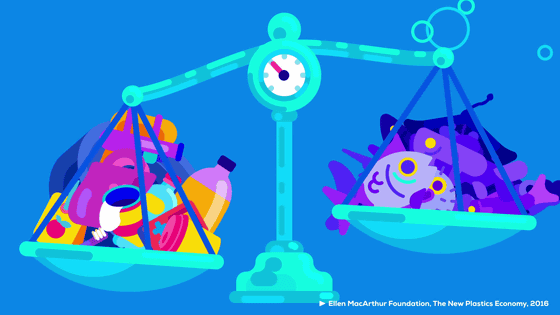
In addition, 90% of seabirds are swallowing plastic waste, but since plastic waste can not be digested, it fills the stomach of the seabird and there is a danger of starvation.

From the corpse of a sperm whale discovered in Spain in 2018, 32 kg plastic waste was discovered, such as plastic bags and nets.

Especially the one which has become a problem in recent years is micro plastic .
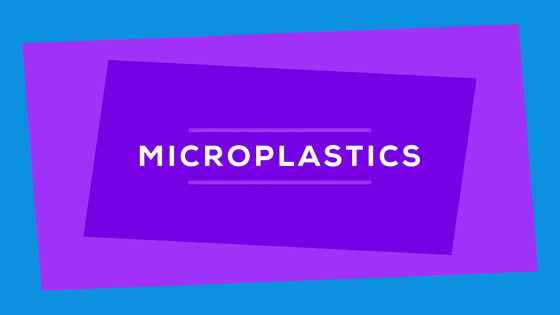
Microplastic is a very fine plastic particle. Its size is less than 5 mm to less than 1 mm.

Although microplastic is often included in abrasives, facial cleansers and cosmetics, there are also many cases where plastics floating in the sea are broken down by ultraviolet rays and are produced as small pieces.

There are 51 trillion microplastic floating in the ocean, which is a problem as sea creatures swallow easily. Since fish can not digest the microplastic swallowed from the mouth, gastrointestinal tracts and contact period may be physically clogged or injured. However, the problem is not only that, it is suggested that the microplastic itself may be toxic. For example, bisphenol A (BPA) used in the synthesis of various plastics has the theory that it inhibits the endocrine system of the human body.
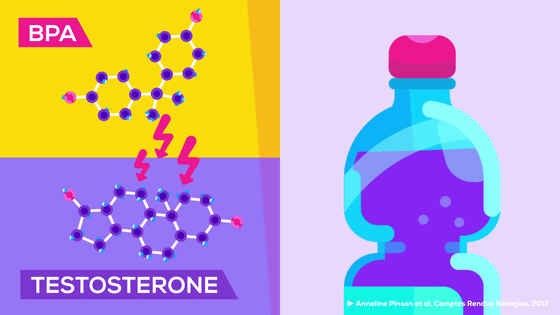
Also, a substance called bis (2-ethylhexyl) phthalate or DEHP is used to make plastics easier to process, but this report not only inhibits the endocrine system like BPA but also reports that it is highly carcinogenic Yes.

Micro plastics do not have adverse effects as soon as they enter the human body if only a little. However, plankton under the sea also ingests microplastic.

Eat lots of small fish that plankton ... ....
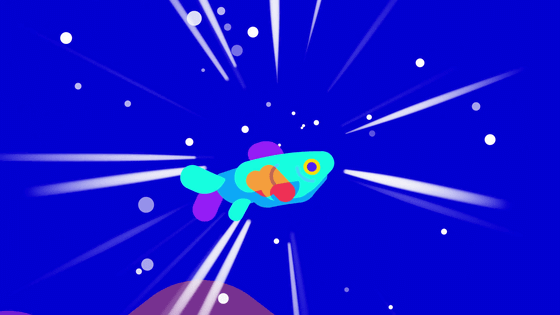
Big fish and crabs eat that small fish, or oyster also called a sweeping shop under the sea absorbs plankton and micro plastics in large quantities and bioaccumulation occurs. If you eat these large fish, crabs and oysters, you will take a large amount of microplastic at once and have a big influence on the human body.

There is already an example where microplastic is detected from our own food and drink such as honey and beer.
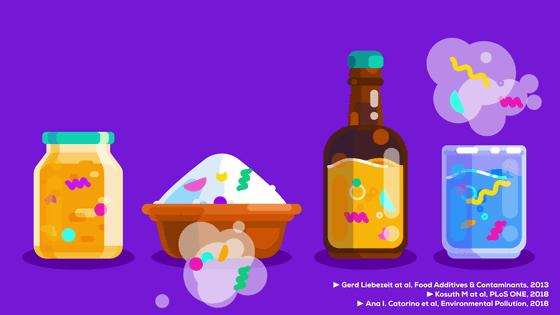
Phthalates as plastics additives have been found at measurable levels from 80% of babies. There is also research data that BPA was detected from 93% of human urine.
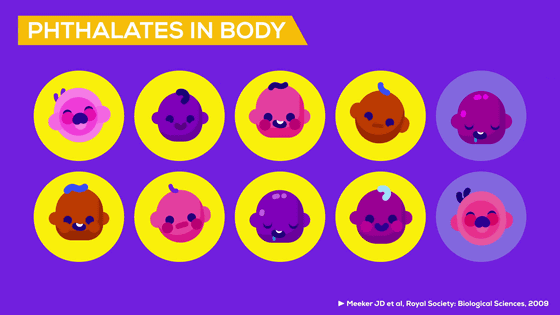
So, if banning plastics at all will lead to a better world, the environmental pollution problem of plastic waste is not that simple.
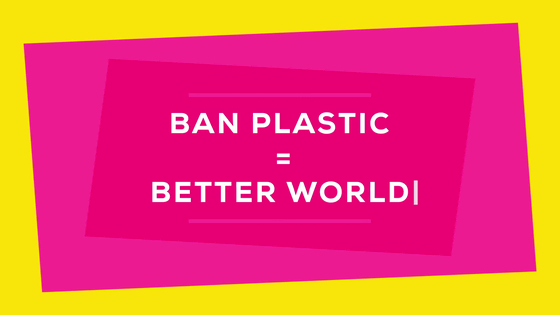
Many things that substitute for plastics are thought to have a further negative influence on the environment when viewed in total. For example, research by the Danish government states that the energy and carbon dioxide emissions necessary to make disposable plastic bags are overwhelmingly less than making cotton bags. If you do not use one cotton bag 7100 times, it is said that the plastic bag is less environmental impact.
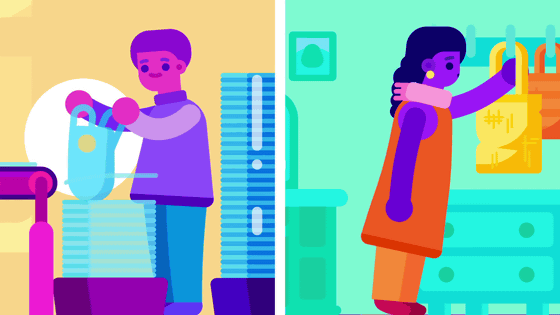
Both plastic, cotton and paper have some environmental impact.
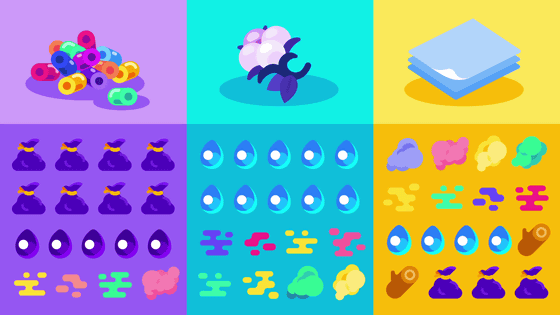
Also, in recent years, methane gas emitted from food waste is taken up as an environmental problem, but it is possible to delay corruption by covering food with plastic packaging and also think that it is suppressing methane gas emissions.

Emerging economies such as China, India, Algeria and Indonesia have industrialized at a dramatic rate over the last few decades. It is said that 90% of plastic waste that is dumped by the ocean is concentrated in 10 Asian rivers and Africa, and 1.5 million tons of plastic is being drifted into the sea every year, especially in the Yangtze River, China.
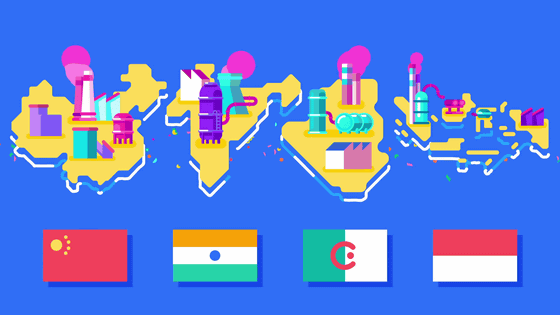
The problem is that recycling has not been able to reach the growth speed of industries without catching up with the waste infrastructure. If European and American politicians are tackling the issue of plastic waste, the movie insists that cooperating in creating infrastructure in emerging countries is as important as reducing plastic products in their country.
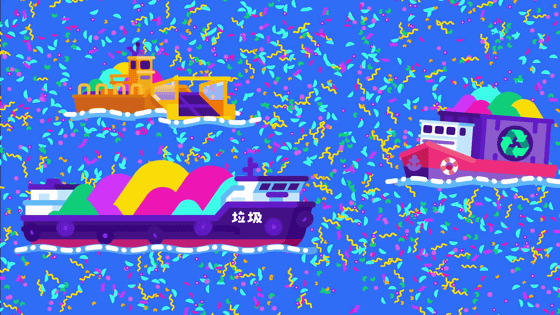
Environmental pollution caused by plastic waste is a complicated problem and it can not be solved unless we try to work not only in our own country but in a broad perspective to look at all the earth.

Related Posts:
